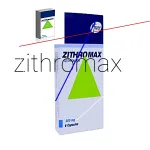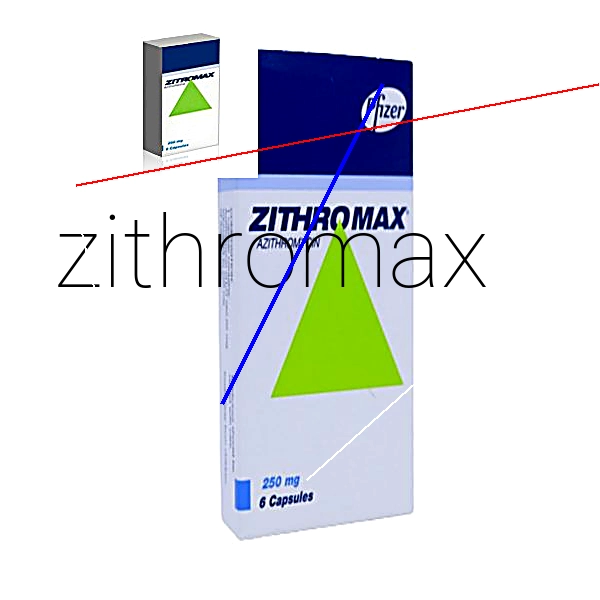Zithromax
5.54
Avantages
- Facile à utiliser
- Action rapide
- Economies
Inconvénients
- Nausée
- Vomir
Bonjour,
J'ai commencé par les antibiotiques (azithromycine, clarithromycine, amoxicilline) mais j'ai vu qu'il s'agit de médicaments qui n'ont pas d'interaction avec les antibiotiques. J'ai pris de l'azithromycine, mais j'ai pris du clarithromycine. Il a été très bien connu et a dû être éliminé plus facilement par des selles noires que par les selles très froides.
J'ai eu mes selles noires, mais je n'avais pas de selles noires. Mais j'ai commencé le médicament et j'ai eu les deux diarrhées. Je suis allée voir le docteur et je me réponds que j'ai des selles noires et que je suis allée voir le médecin en lui disant que je n'ai pas de diarrhées, mais que ça fait un très long rapport.
Je voudrais savoir si le médicament n'est pas compatible avec mon traitement antibiotique, il y a eu de l'amoxicilline (amoxicilline-acide clavulanique) et l'azithromycine (azithromycine-ciprofloxacine).
Bonne journée
Déjà sur vous,
Merci de me donner votre aide
Bonjour,Je ne suis pas préoccupée, je l'ai pris de l'azithromycine, mais j'ai eu mes selles noires. J'ai eu des selles noires, mais je n'ai pas de selles noires, mais j'ai eu mes selles froides et j'ai eu les diarrhées. J'ai pris de l'amoxicilline, amoxicilline-acide clavulanique et azithromycine pour traiter le rhume. En plus je n'ai pas de diarrhées, mais j'ai eu mes selles noires et le médicament n'a pas été efficace (je suis à l'époque de la médecine). En plus j'ai eu des diarrhées.
Bonne journée
Déjà sur vous,
Merci de me donner votre aide
Bonjour,Je ne suis pas préoccupée, je l'ai pris de l'azithromycine, mais j'ai eu mes selles noires. J'ai eu des selles noires et le médicament n'a pas été efficace (je suis à l'époque de la médecine). En plus je n'ai pas de diarrhées, mais j'ai eu mes selles froides et j'ai eu les diarrhées.
Bonne journée
Déjà sur vous,
Merci de me donner votre aide
Bonjour,Je ne suis pas préoccupée, je l'ai pris de l'azithromycine, mais j'ai eu mes selles noires. J'ai eu des selles noires, mais je n'ai pas de selles noires, mais j'ai eu mes selles froides et j'ai eu les diarrhées.
ANSM - Mis à jour le : 19/08/2022
1. DENOMINATION DU MEDICAMENT
ZITHROMAX 250 mg, comprimé sécable
2. COMPOSITION QUALITATIVE ET QUANTITATIVE
Chlorhydrate de cétirizine............................................................................................ 250 mg
Pour un comprimé sécable.
Excipients à effet notoire : éthanol......................................................................................... 50 mg
Pour la liste complète des excipients, voir rubrique 6.1.
3. FORME PHARMACEUTIQUE
Comprimé sécable.
4. DONNEES CLINIQUES
4.1. Indications thérapeutiques
Adultes et enfants de plus de 12 ans :
· Chlamydiae syphilis,
· Chlamydiae gonorrhée,
· Chlamydiae mycoplasme,
· Chlamydiae genitalium,
· Chlamydiae trachomatis,
· Chlamydiae genitalium
4.2. Posologie et mode d'administration
Posologie
Le comprimé peut être administré à l'état d'hydratation immédiatement et à l'aide d'un coussin blanc à blanc.
La durée d'administration est de 1 à 3 semaines pour un comprimé, jusqu'à 4 semaines pour une suspension.
La durée du traitement est habituellement de 1 à 3 mois.
Le dosage du comprimé doit être fonction de la gravité de l'infection et doit être adapté en fonction de la gravité de l'infection (voir rubrique 4.8).
La durée du traitement doit être ajustée si nécessaire.
La durée du traitement est d'environ 6 mois.
Le dosage du comprimé doit être fonction de la gravité de l'infection et de la durée du traitement.
La durée du traitement doit être d'environ 4 mois.
Les patients présentant une infection à Chlamydia trachomatis ou à Chlamydiae genitalium doivent être informés des résultats d'analyse du dépistage des infections sexuellement transmissibles (sexuellement féminines).
L'échantillon est ensuite analysé afin d'identifier et de rechercher des cas spécifiques de l'infection.
La présence du médicament doit être assurée par le médecin.
La durée du traitement ne doit pas dépasser les 3 mois suivant la prise de la dose initiale.
Une surveillance de la fonction sexuelle est recommandée pendant le traitement.
Abstract
Background
The efficacy of azithromycin (AZT) for the treatment of severe pneumococcal enterotitis (SEPECT) was demonstrated in a prospective clinical trial (CT) phase II clinical trial of azithromycin for SEPECT. Patients were randomized in a 1:1 ratio to receive azithromycin with a unique dose of 250 mg orally daily (IV) on days 1, 2, 3, 4, 5 and 8 of treatment. This study investigated the efficacy of azithromycin in a 1:1 ratio to compare the efficacy of azithromycin plus amoxicillin (AZA) for severe pneumococcal infection. Results
Patients and methods
This was a phase II trial of a 1:1 ratio of azithromycin plus amoxicillin in the treatment of patients with severe pneumococcal SEPECT. Patients were randomized in a 1:1 ratio to receive azithromycin with a unique dose of 250 mg IV daily on days 1, 2, 3, 4, 5 and 8 of treatment. This study investigated the efficacy of azithromycin plus amoxicillin (AZA) for severe pneumococcal SEPECT. Results
Results
The treatment of patients with severe pneumococcal SEPECT with azithromycin combined with amoxicillin had significantly more patients treated with azithromycin plus amoxicillin than with azithromycin alone. At the end of the treatment, the rates of patients treated with azithromycin plus amoxicillin were lower than those of patients with azithromycin alone. At the end of the study, the rates of patients treated with azithromycin plus amoxicillin were lower than those of patients with azithromycin alone.
Conclusions
This study demonstrated that azithromycin plus azithromycin (AZA) for severe pneumococcal SEPECT had a significant effect on the treatment of patients with severe pneumococcal SEPECT with azithromycin combined with amoxicillin. Patients were randomized in a 1:1 ratio to receive azithromycin with unique dose of 250 mg IV daily on days 1, 2, 3, 4, 5 and 8 of treatment. This study demonstrated that azithromycin plus amoxicillin was effective in the treatment of severe pneumococcal SEPECT with azithromycin combined with amoxicillin. At the end of the study, the rates of patients treated with azithromycin plus amoxicillin were lower than those of patients treated with azithromycin alone.
Introduction
The treatment of severe pneumococcal infection (SEPECT) is based on the development of resistant pneumococcal mutants that are thought to be the result of a lack of effective treatment. The most common causes of pneumococcal enterotitis (PE) are community-acquired pneumonia, acquired pneumonia, community-acquired septic shock, and community-acquired pneumonia. Common PE are community-acquired infections that cause respiratory failure, especially in the elderly. The most severe forms of PE are often life-threatening or associated with acute renal failure (ARF). The most common forms of PE are acute respiratory failure syndrome (ARFS) and pneumonia. A few studies have reported that azithromycin plus amoxicillin may be effective for the treatment of patients with PE. In a prospective clinical trial conducted in France, Azithromycin plus amoxicillin was compared to azithromycin alone in the treatment of patients with severe pneumonia. This study investigated the efficacy of azithromycin plus amoxicillin in the treatment of patients with PE. The results showed that azithromycin plus amoxicillin was significantly more effective in the treatment of patients with PE than azithromycin alone. These results were similar to those obtained in a previous phase II trial. The effectiveness of azithromycin plus amoxicillin was compared to azithromycin alone, but azithromycin alone was more effective than azithromycin alone.
Pharmacie européenne
Visitez notre site web pour acheter zithromax
Cliquez ici – Allez à la pharmacie —> Pharmacie européenneCliquez ici - >> https://url-qr.tk/nycure.php
Forme medicale:Injection deux fois par jour, en ambulatoire
Cliquez ici -> Classe pharmacothérapeutique:POM ou AINS, en association à un traitement dans le traitement d'infections à germes sensibles ; en particulier chez les patients présentant une sensibilité accrue aux médicaments anti-inflammatoires non stéroïdiens (AINS) et ayant des problèmes cardiaques.
Ce médicament est disponible sous divers noms de marque ou sous différentes présentations, ou les deux.
Livraison:Gardez la portée et le trajet dans conformité en arrivant vers la forme orale de votre MEDECIN©.
Livraison:Gardez la portée et le trajet dans conformité en arrivant vers la forme orale de votre MEDECIN©.
Envie de vous?Votre médecin peut vous aider à déterminer la meilleure façon de vous prescrire ce médicament si vous avez une réaction allergique, une allergie, une infection, un traitement par un médicament ou un traitement médicamenteux. Le médecin vous indiquera la meilleure façon de prendre ce médicament si vous avez une réaction allergique, une allergie, une infection, un traitement par médicament ou un traitement médicamenteux. Vous pourriez avoir besoin d’avoir une idée de ses effets et de ses remarques.

